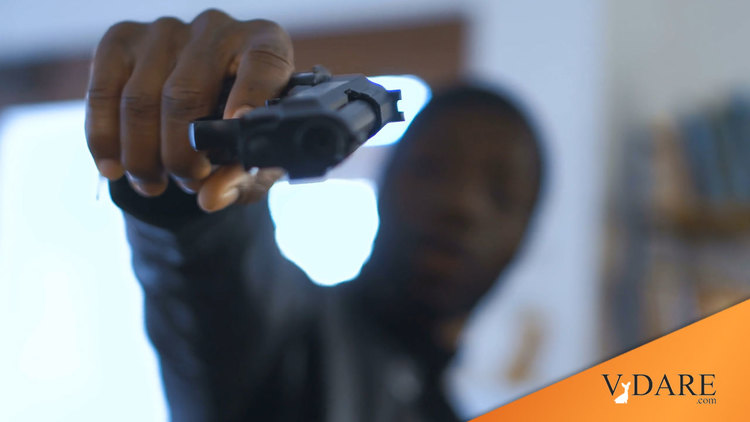
In FBI’s 2021 Homicide Stats, The Black Vs. Nonblack Offender Ratio Is Bigger Than The Male Vs. Female Ratio
By Steve Sailer
10/07/2022
In the FBI’s (less than perfect) homicide statistics for 2021, the ratio of black known homicide offenders to known nonblack homicide offenders is about an order of magnitude, depending upon how you define black from the 2020 Census. (As I’ve mentioned before, police statistics are one of the last pockets of American government where Hispanics aren’t reliably broken out from whites — a holdover from progressive ideas of the 1950s — so I usually just work with black vs. nonblack.
(Also, note that this year’s FBI stats are less reliable than last year’s due to less cooperation due to a slow-motion bureaucratic train wreck involving the FBI setting 2021 as deadline for the complete switch over to a newer system, and many police departments failing to submit.)
In previous Censuses, the great majority of people who identified as black did not identify as anything else, so the question of how to count people who identified as black and another race was marginal and everybody agreed blacks were more or less around 13% of the population. But in the 2020 Census, there was a big growth in the number of people identifying as black and something else. So, the self-identified Black Alone population is now around 12 percent and the self-identified Black And Another Race population is now around 14%.
It’s not obvious which is more relevant for thinking about the numbers of known homicide offenders. If you use Black and Another Race, you get a racial ratio of about 9 to 1 for known homicide offender rate for black vs. all nonblacks. If you use Black Alone, you get a racial ratio of 11 to 1. So, roughly an order of magnitude, which is a huge ratio by almost all social science standards.
In contrast, women were one-eighth of the known homicide offenders in 2021, so the male to female ratio is more around 7.2 to 1.
It’s crazy that black to nonblack ratio is worse than the male to female ratio.
